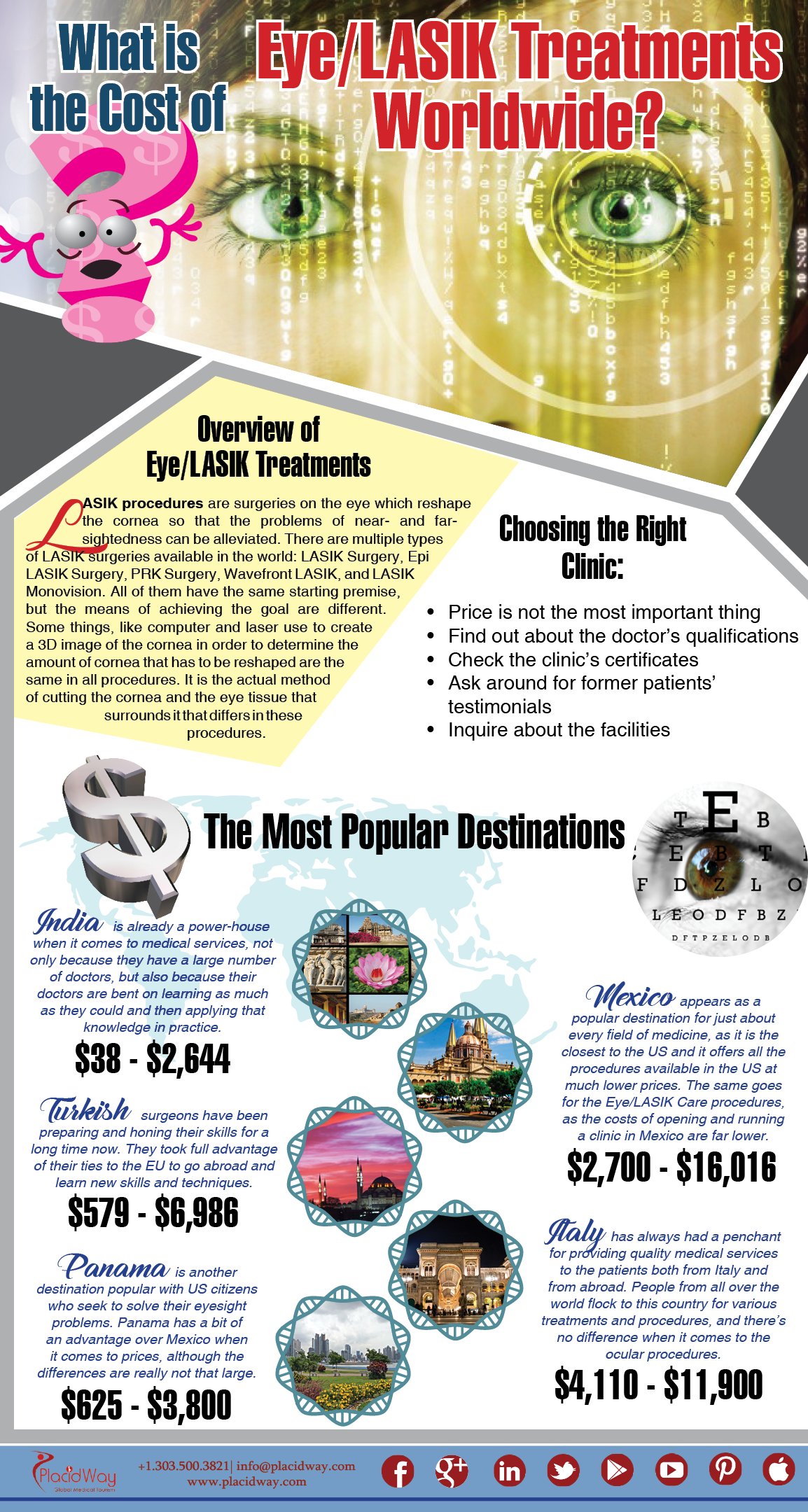How Does SMILE Eye Surgical Procedure Contrast To LASIK And PRK?
How Does SMILE Eye Surgical Procedure Contrast To LASIK And PRK?
Blog Article
Write-Up Written By-Ryberg Chase
If you've been thinking about SMILE eye surgery, you could question how it compares to LASIK and PRK. Each treatment has its very own collection of benefits and considerations. From https://costoflasikpereye50627.snack-blog.com/26502041/integrating-eastern-and-western-medication-for-comprehensive-glaucoma-treatment to possible risks, there are crucial distinctions you should understand before deciding. Understanding these distinctions will certainly assist you make an enlightened choice that aligns with your specific needs and assumptions. Interested to know more about just how these treatments contrast carefully? Keep exploring to gain a comprehensive understanding of SMILE, LASIK, and PRK.
SMILE Eye Surgery Summary
If you're considering SMILE eye surgery, you'll find it to be a minimally intrusive treatment with a fast healing time. Throughout SMILE (Small Laceration Lenticule Removal), a laser is made use of to create a small, precise incision in the cornea to get rid of a small piece of cells, reshaping it to remedy your vision. This varies from LASIK, where a flap is produced, and PRK, where the external layer of the cornea is entirely eliminated.
Among the crucial benefits of SMILE is its minimally intrusive nature, bring about a faster healing process and less pain post-surgery. The recuperation time for SMILE is relatively quick, with numerous patients experiencing enhanced vision within a day or two. This makes it a prominent option for those looking for a practical and effective vision adjustment procedure. Furthermore, SMILE has been shown to have a lower danger of completely dry eye disorder compared to LASIK, making it a beneficial choice for people worried concerning this possible side effect.
Distinctions In Between SMILE, LASIK, and PRK
When contrasting SMILE, LASIK, and PRK eye surgical treatments, it is necessary to understand the unique methods used in each procedure for vision adjustment.
relevant web page (Little Cut Lenticule Removal) is a minimally invasive procedure that entails producing a little cut to draw out a lenticule from the cornea, reshaping it to remedy vision.
LASIK (Laser-Assisted Sitting Keratomileusis) entails developing a slim flap on the cornea, making use of a laser to improve the underlying tissue, and afterwards rearranging the flap.
PRK (Photorefractive Keratectomy) eliminates the external layer of the cornea prior to reshaping the cells with a laser.
The primary difference depends on the way the cornea is accessed and treated. SMILE is flapless, making it an excellent choice for people with slim corneas or those associated with call sporting activities. LASIK supplies rapid visual healing as a result of the flap creation, yet it may posture a higher danger of flap-related problems. PRK, although having a much longer recuperation period, prevents flap-related issues entirely.
Recognizing these variances is vital in picking one of the most appropriate treatment for your vision modification needs.
Pros and Cons Contrast
To assess the advantages and disadvantages of SMILE, LASIK, and PRK eye surgeries, it's necessary to take into consideration the specific advantages and prospective limitations of each treatment. SMILE surgical procedure provides the benefit of a minimally intrusive treatment, with a smaller cut and potentially quicker recovery time compared to LASIK and PRK. It additionally minimizes the danger of dry eye post-surgery, a typical adverse effects of LASIK. However, SMILE may have limitations in dealing with higher levels of nearsightedness or astigmatism contrasted to LASIK.
LASIK surgical treatment offers quick visual healing and minimal pain during the procedure. It's very effective in treating a vast array of refractive mistakes, including myopia, hyperopia, and astigmatism. Yet, LASIK carries a danger of flap problems, which can affect the corneal framework.
PRK eye surgical procedure, while not as preferred as LASIK, avoids developing a corneal flap, minimizing the risk of flap-related difficulties. It's suitable for people with slim corneas or irregular corneal surfaces. Nonetheless, PRK has a much longer recuperation time and may entail more pain throughout the recovery procedure.
2 years after cataract surgery , when it involves picking in between SMILE, LASIK, and PRK, consider it like picking the best set of footwear. SMILE is like a streamlined, comfortable set of sneakers - fast and simple.
LASIK is much more like trendy high heels - showy and quickly, yet with some potential dangers.
PRK resembles strong treking boots - dependable and resilient, yet requiring a little bit more effort and time.
Ultimately, the best selection relies on your individual demands and choices.
